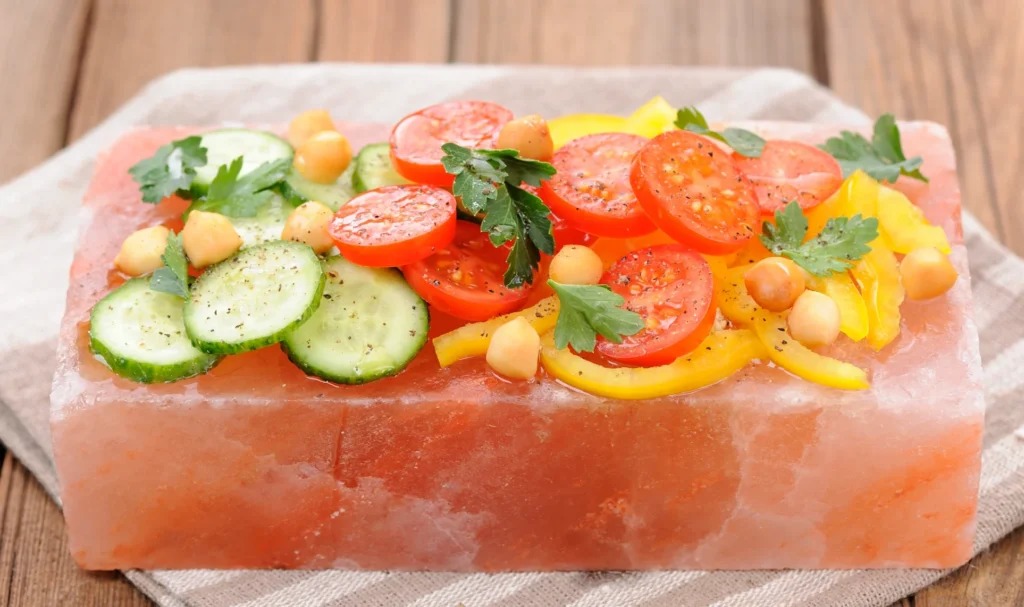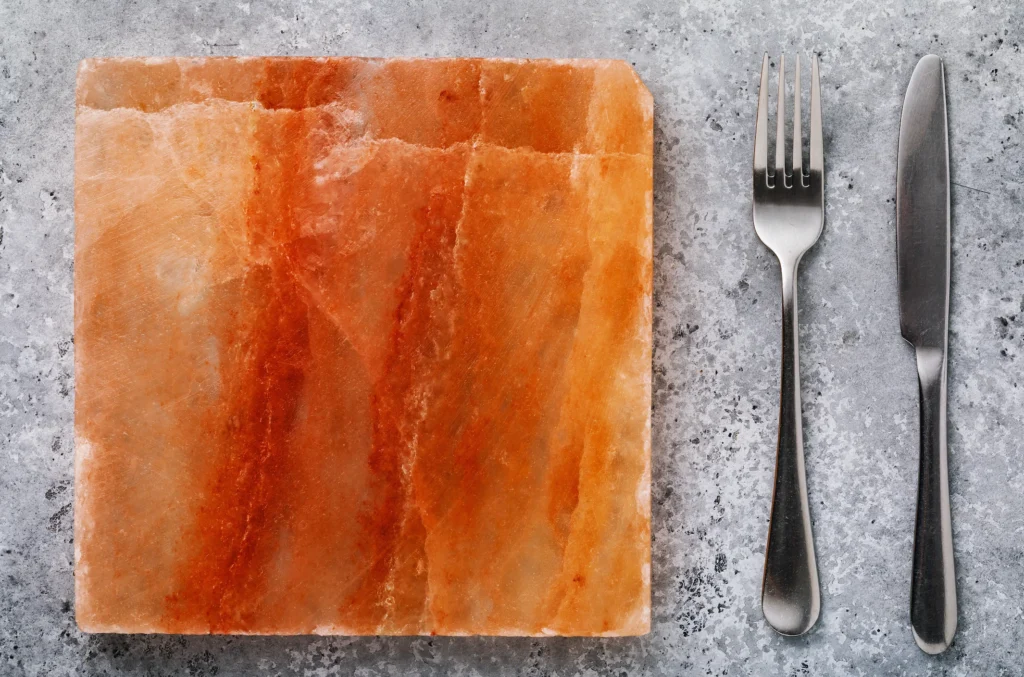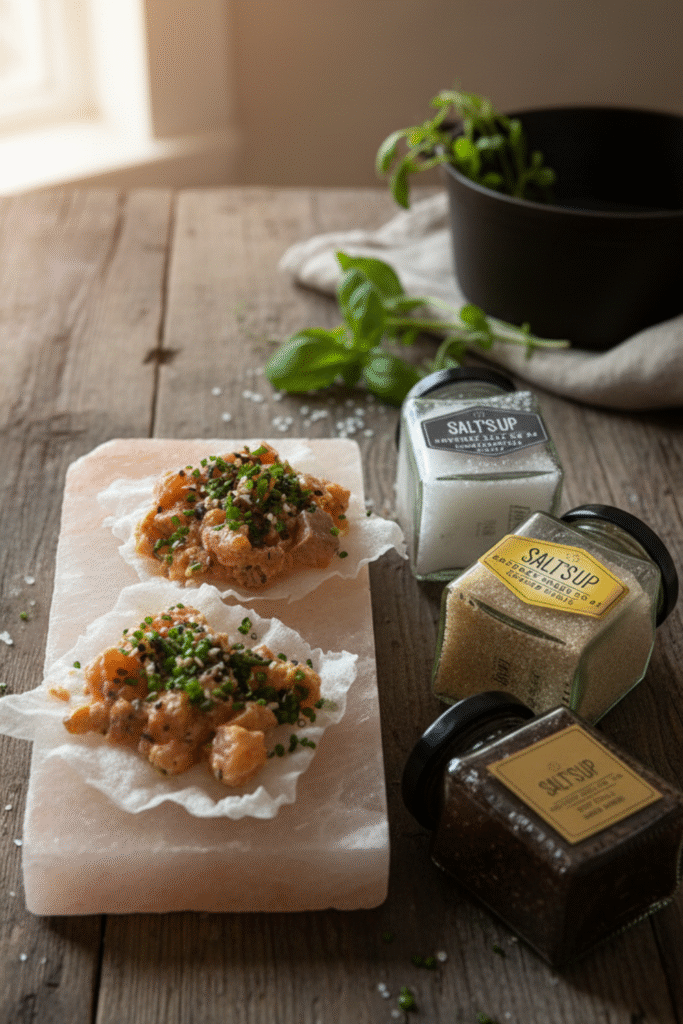If you’ve gotten yourself a salt plate, you probably already know it’s not just a pretty pink stone, but it can work small miracles in the kitchen. SaltsUp salt plates are handcrafted from natural pink salt from Pakistan and can be used both hot and cold. They give food a gentle, even saltiness and add that gourmet touch a regular pan simply can’t offer.
How to Use a Salt Plate
You can use it in many ways — on the grill, in the oven, on the stove, or even chilled for serving.
1. Hot Plate – for meat and vegetables
- Place the block on a cold grill or oven and heat it slowly — start around 100°C and gradually increase to 250–300°C. Heating too fast may cause cracking.
- When it’s hot enough (you’ll feel strong heat when holding your hand above it), you can place steak, salmon, shrimp, or sliced zucchini directly on it.
- Food cooks quickly and absorbs just the right amount of salt.
2. Cold Plate – for serving or cold dishes
- Chill the salt block in the fridge or freezer for a few hours.
- Serve sushi, sashimi, carpaccio, cheese, fruit, or ice cream on it — the lightly salty surface enhances flavors and keeps dishes cool and fresh on warm days.
3. As a Serving Plate
- The salt block looks spectacular on the table — especially for appetizers or desserts served directly on it.
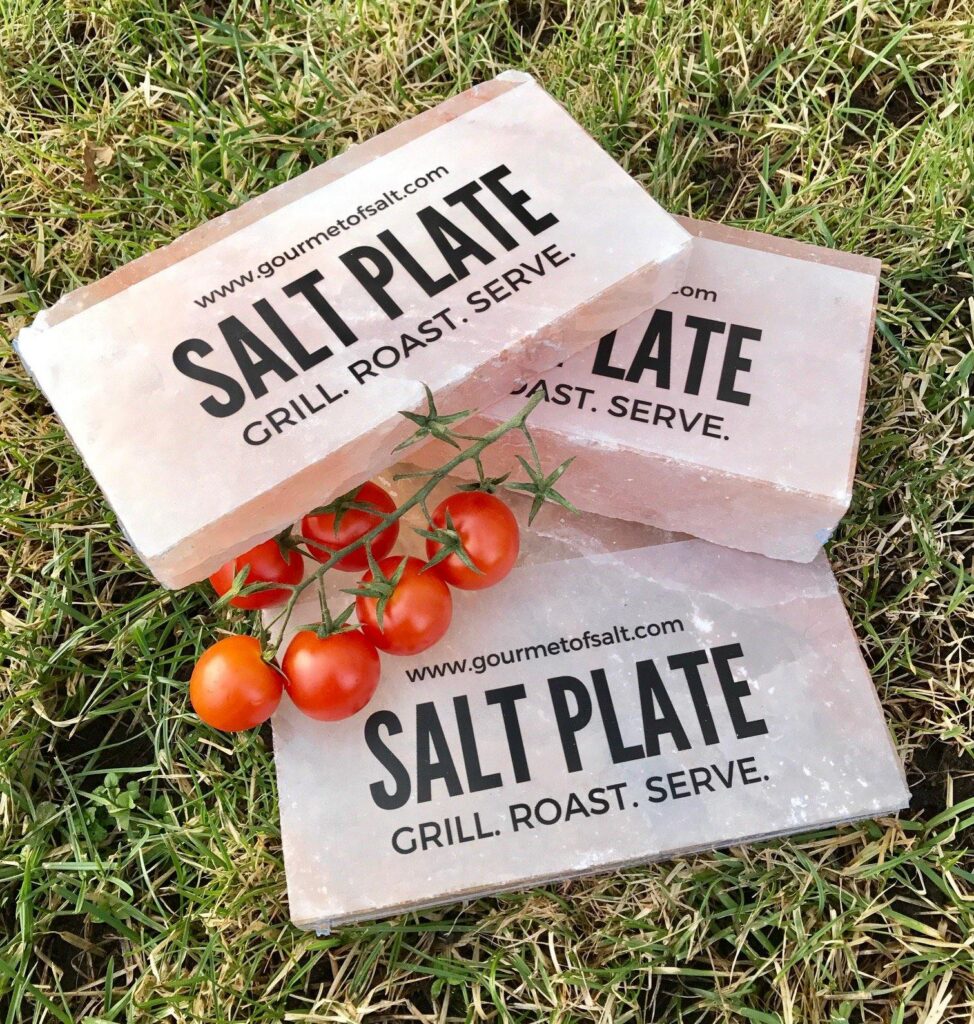
- It also helps food stay warm or cold longer.
Care – How to Make It Last for Years
- Never wash under running water or with soap! Wipe with a damp cloth or paper towel, scrape gently with a metal spatula if needed. Water can seep into the porous stone and cause cracking.
- Let it cool and dry completely before storing. Keep it out of direct sunlight — wrap in a kitchen towel and store in a dark cabinet.
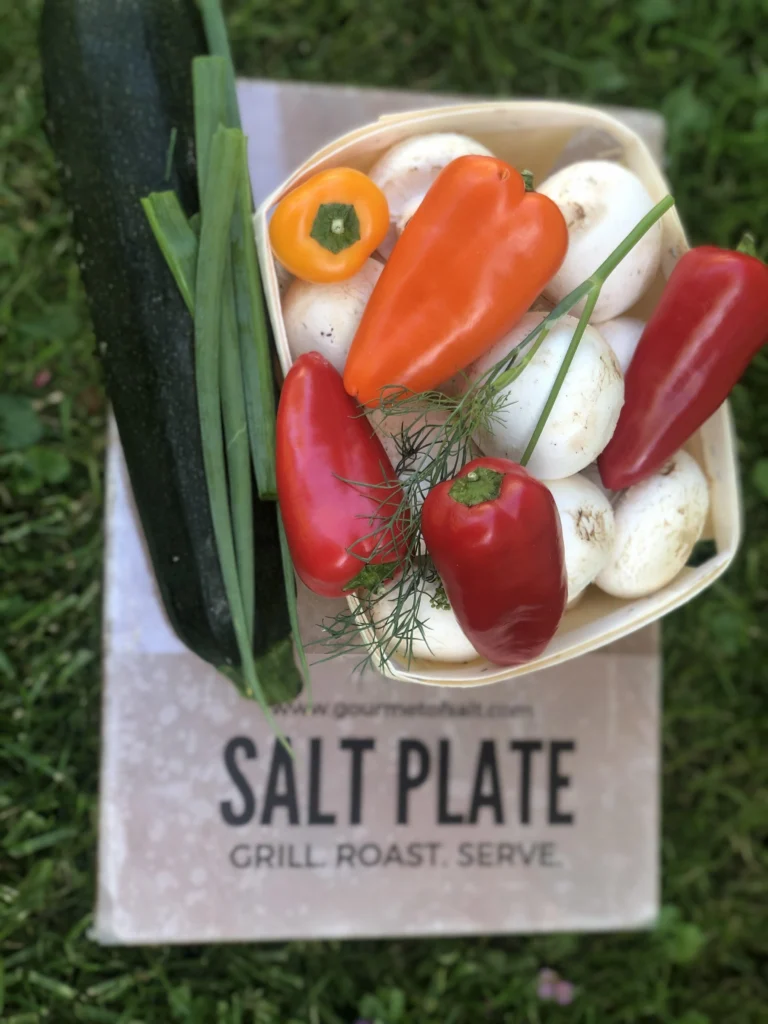
- Uneven color or surface over time is normal — it’s a sign of use, not damage.
- Store in a dry place, since moisture can dissolve salt.
💡 Tip: If it becomes uneven or too dirty, gently sand the surface with fine sandpaper.
More Creative Ways to Use a Salt Plate
It’s not just for meat — the salt block is a versatile kitchen tool if you like to experiment.
- Salty ice cream: Chill the block and serve vanilla ice cream with caramel sauce — the slight saltiness deepens the sweetness.
- Chili-lime shrimp: Hot block + 2 minutes per side = perfection.
- Quick-cured salmon: Place raw salmon slices on a cold block for 10–15 minutes — you’ll get a delicate, lightly salted “cold-smoked” effect.
- Grilled vegetables: Especially good with zucchini, peppers, and mushrooms.
Where Do SaltsUp Salt Blocks Come From?
Our salt plates are made in a small factory in the Punjab region of Pakistan. Each one is handcrafted, cut, and polished individually. The larger and heavier the block, the longer it takes to make. Factory manager Mohamed says rectangular blocks are quicker to produce, while round ones — especially large ones — require far more time and skill.
Smoked Salmon Between Salt Blocks – Our Kitchen’s Favorite Trick
Some recipes come from experimentation and stay forever. In our kitchen, one favorite is a smoky salmon prepared without fire or smoke, just two salt blocks, a little patience, and a splash of cognac.
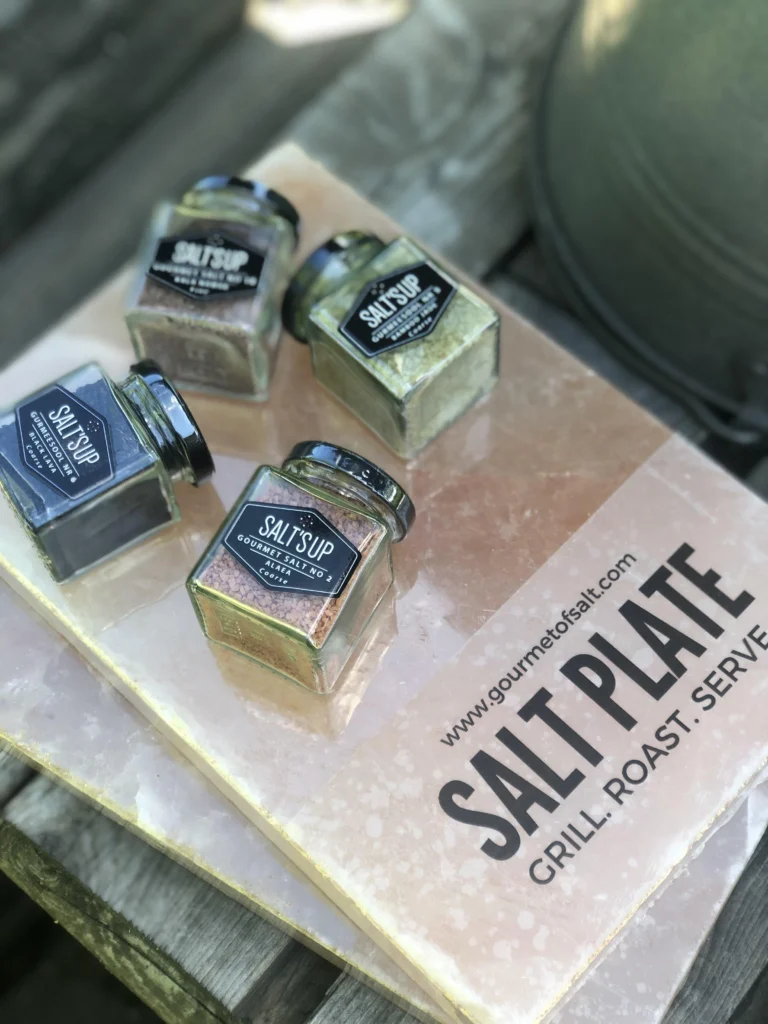
You’ll need:
- A piece of salmon or trout
- A pinch of smoked salt
- 2 salt blocks
- A splash of cognac
- A bit of brown sugar
Instructions:
- Mix the cognac, brown sugar, and smoked salt in a small bowl — it already smells like smoked fish day.
- Rub the fish with the mixture on both sides.
- Place the fish between two salt blocks and wrap tightly in cling film.
- Refrigerate overnight. The salt, alcohol, and sugar draw out excess moisture and add a delicate smoky-salty flavor.
In the morning, you’ll have beautifully seasoned, gently smoked salmon — refined yet homemade.
Bonus: The salt plate will show a faint fish pattern afterward — a natural “signature” some even use decoratively for their next serving.
Serve:
- In thin slices on rye bread with lemon and dill
- On a salad with olive oil and black pepper
- Or simply as is — good fish needs nothing more.
If you have now found yourself wanting a salt plate in your kitchen, then find it here: saltsup.com

